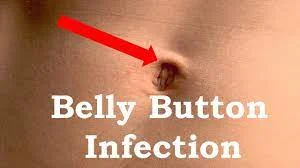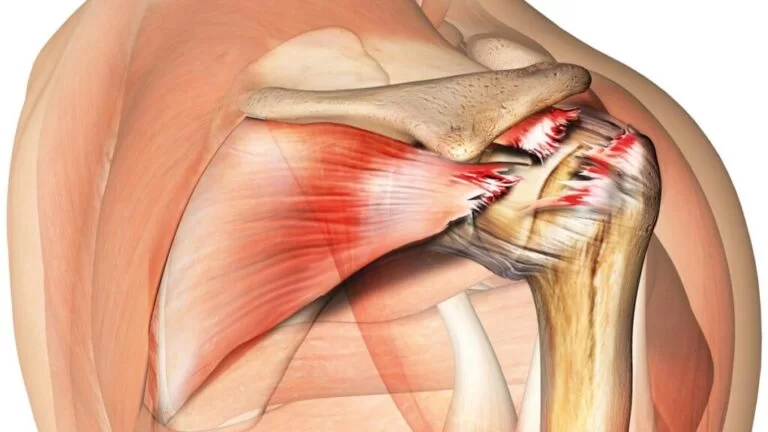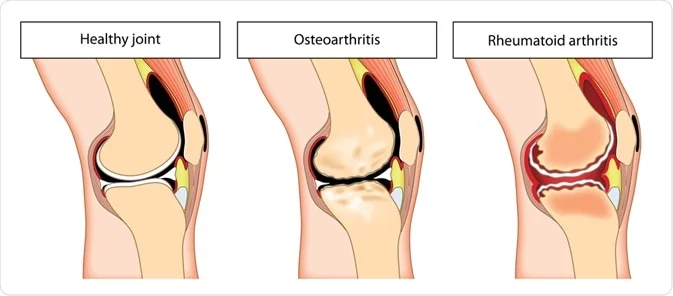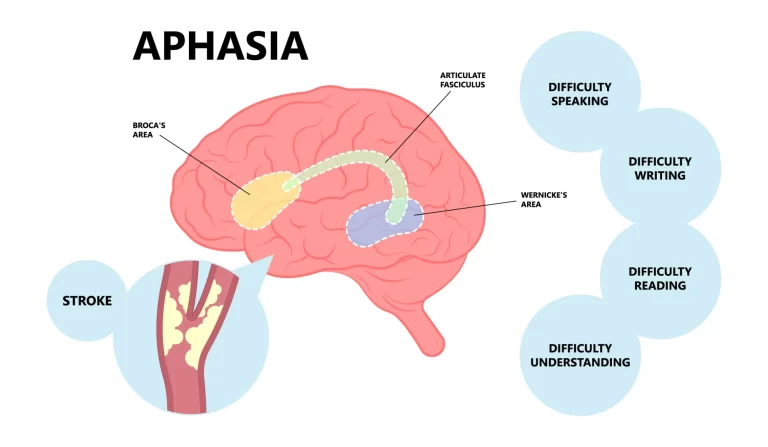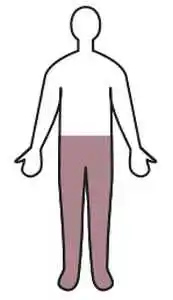Belly Button Infection
What is a Belly Button Infection?
A belly button infection, also known as omphalitis, is an inflammation of the umbilicus and its surrounding area. This condition can affect individuals of all ages, from newborns to adults. The belly button, due to its structure, can be a prime spot for bacteria and fungi to thrive, especially in the presence of moisture and poor hygiene.
It results in an irritable, bright red rash around your navel. Candida grows well in warm, gloomy conditions. Creams, ointments, and powders are used as treatments. By keeping your navel area dry and clean, you can avoid developing yeast infections in your belly button.
You can get a yeast infection anywhere in your body. In fact, they may appear practically anywhere on your body, including the button in your belly. A yeast infection in the skin of your navel is known as a belly button yeast infection. A fungal infection causes candidiasis. Candida is the kind of yeast that causes it. One kind of fungus is yeast.
This also applies to the yeast known as Candida. This often has no negative effects on healthy individuals. However, Candida may penetrate beneath the skin’s surface when it gathers in moist, dark places. A skin infection may result from this. On your body, candidiasis may appear practically anywhere. However, the warm, moist cracks in your skin, such as your belly button, are where it’s most commonly detected.
Sometimes a belly button infection won’t go away on its own. It’s critical to keep the area clean, refrain from picking at it, and above all seek medical assistance if you have any infection-related symptoms, such as redness, swelling, or discharge.
In order to heal, belly button infections may need to be treated medically with antibiotics or other drugs. You can wait two to three days to see if the infection goes away on its own if you don’t have a temperature and the pain isn’t too bad. Nonetheless, it’s wise to make an appointment with your doctor if your symptoms get worse.
Recall that maintaining the health of your belly button is crucial to avoiding problems and guaranteeing your general well-being.
Types of Belly Button infections
There are several tiny wrinkles in the delicate region surrounding your belly button.
According to Banner Health family nurse practitioner Samia Kadri, “These fold areas can trap moisture, dirt, and debris.” “This warm, damp environment is ideal for the growth of yeast and fungi.”
The following are the most typical kinds of belly button infections:
- Bacterial infections:
These arise from the entry of pathogenic bacteria into the belly button, which then grow and cause an infection. The most frequent culprits are Streptococcus species (strep infection) and Staphylococcus aureus (staph infection).
- yeast infections and fungus infections:
Belly button infections can be caused by fungus, including yeast, particularly in warm, humid conditions. Yeast overgrowth can occur anywhere on the body, mainly in the mouth, throat, and belly button (primarily caused by the Candida yeast species).
What Are Some Home Treatments for Infections of the Belly Button?
The following natural cures might aid in the treatment of an infection in the belly button:
- Warm Saltwater Soaks:
Moisten a cloth or cotton ball and dip it into the mixture.
Cleanse the contaminated region around your abdominal button gently.
To maintain the area clean and encourage healing, repeat a few times a day. - Tea Tree Oil:
Use a carrier oil (like coconut oil) to dilute a few drops of tea tree oil.
Using a cotton swab, apply the mixture to the affected region.
The natural antibacterial qualities of tea tree oil can aid in the battle against illness. - Turmeric Paste:
On the belly button that is infected, apply the paste.
Turmeric possesses antibacterial and anti-inflammatory qualities. - Aloe Vera Gel:
Immediately apply new aloe vera gel to the affected area.
Aloe vera offers calming and restorative qualities. - Keep Dry:
Wetness can exacerbate infections.
Keep of moisture-trapping tight garments. - Avoid of Harsh Chemicals:
Don’t use alcohol-based products or harsh soaps on the affected region.
Use gentle, fragrance-free cleaning products.
Remember to see a doctor right away if the infection increases, lasts longer, or causes you to feel excruciating pain. They are competent to provide precise diagnoses and provide appropriate treatments.
What is the time belly button infections are healed?
A belly button infection’s recovery period might vary depending on a number of factors:
- Severity: The degree of infection is a factor. Infections that are not as serious could clear up sooner.
- Prompt Care: Getting medical help as soon as possible will help hasten the healing process.
- Cause: The infection’s origin is important to know. The recovery periods for fungal and bacterial infections may differ.
In general, the healing process of a belly button infection might take three to nine months. Individual experiences, however, could differ. Don’t forget to practice good hygiene, adhere to any recommended medical advice, and see a doctor when necessary.
What are some prevalent reasons for an infection in the belly button?
Numerous reasons might lead to belly button infections. Let’s investigate a few typical causes:
- Poor Hygiene:
An infection may result from the buildup of dead skin cells, oils, germs, and debris in the belly button. - Piercings:
The risk of infection is higher if you have a navel piercing.
To avoid issues, maintaining proper cleanliness and aftercare is crucial. - Moist Environment:
Bacteria and fungi love a warm, moist belly button as a perfect breeding habitat.
Dry off the area to avoid infection. - Laparoscopic Surgery:
Following a laparoscopic operation, an infection may develop in the belly button.
Pay close attention to the post-surgery instructions. - Skin Conditions:
Psoriasis and intertrigo, which are caused by rubbing together the skin, can aggravate infections.
A favorable environment for microbial development is produced by these circumstances. - Underlying Health Factors:
People who are expecting
Those who are obese or overweight
Individuals who use antibiotics
People using chemotherapy for cancer treatment
those whose immune systems are compromised
Recall that controlling and avoiding belly button infections requires practicing proper hygiene, keeping the region dry, and getting medical help as soon as necessary.
What are some symptoms of a belly button infection?
Numerous symptoms might appear as a result of belly button infections.
- Bright Red Rash:
In the skin folds around your navel, a bright red rash is the most common symptom.
This rash can be uncomfortable and is usually quite irritating. - Burning Sensation:
The affected region may feel as though it is burning. - Scaling and Swelling:
Scaling and swelling may be visible on the skin surrounding the abdominal button. - White Discharge:
The diseased location may occasionally produce a white discharge. - No Odor (Usually):
Yeast infections in the belly button often don’t produce any smells.
The most typical sign of a yeast infection in the belly button is a bright red rash in the folds of skin around your navel. Usually, the rash is quite irritating. It may burn. Additionally, scaling, edema, or a white discharge may be seen.
Yeast infections of the belly button typically don’t smell. However, if your yeast infection is caused by an intertrigo skin problem, you could smell musty. Intertrigo occurs frequently. Heat, wetness, and the friction of your skin all contribute to its occurrence.
On the other hand, you may detect a musty odor if the infection is caused by intertrigo, a skin ailment.
Remember, get medical help right away if you think you may have an infection in your belly button. A speedy recovery depends on an accurate diagnosis and course of therapy.
How is a belly button yeast infection diagnosed?
Your doctor could do a physical examination. By examining the skin around your navel, they might be able to determine whether you have a yeast infection. One frequent symptom of a yeast infection in the belly button is a bright red rash.
It’s possible that your doctor will want to analyze a sample of the affected region. They will gently scrape out a little portion of skin from your navel region using a tongue depressor or scalpel. The material will be examined under a microscope by a lab professional. They might also insert the material into a culture. The material that helps the sample develop so the fungus may be recognized is called a culture.
In the event that you do develop a yeast infection, your doctor could advise getting tested for diabetes. Yeast uses high blood sugar levels as food and grows when a person has diabetes.
How is a belly button yeast infection treated?
An antifungal medicine may be part of your treatment for a yeast infection in your belly button. An antifungal cream, ointment, or powder may be suggested by your healthcare professional. The antifungal will be applied straight to the area surrounding your abdominal button. Antifungal lotions are widely available over-the-counter. If required, your healthcare professional could prescribe an antifungal medication.
As part of your therapy, you will need to maintain a dry and clean navel area. Additionally, keeping the region dry and clean might aid in preventing the recurrence of yeast infections. Leaving your navel open could also be beneficial.
Your doctor could recommend an oral antifungal medicine in specific situations. Oral medication is used to consume medications like fluconazole.
Can I use apple cider vinegar to treat my belly button infection?
The antibacterial qualities of apple cider vinegar have been praised for their potential to fight illnesses. Here’s how to use it to heal an infection in your belly button:
Organic Vinegar for Apple Cider:
For best results, use organic apple cider vinegar that has been fermented with the “mother.”
The murky, healthy component present in unfiltered apple cider vinegar is referred to as the “mother.”
Application:
Take a cotton swab and give it a little apple cider vinegar rub.
Gently clean the inside of your abdominal button with the swab.
After that, pat the area dry.
While apple cider vinegar may be useful, keep in mind that if the illness worsens or continues, you should definitely consult a specialist. A speedy recovery depends on an accurate diagnosis and course of therapy.
Can I use rubbing alcohol to clean my infected belly button?
Yes, you may wipe the exterior of your belly button with rubbing alcohol.
Application:
Using a cotton swab, ball, or alcohol pad, apply rubbing alcohol.
You may either pat dry the area with a clean, soft cloth or let it air dry.
Take Care:
Rubbing alcohol can dry out your skin even if it has antibacterial qualities.
Try not to use it more than twice a day. Remember, it’s preferable to see a doctor if you feel pain or detect any irritation.
Prevention:
By keeping the region around your navel dry and clean, you may be able to avoid yeast infections in your belly button. Your navel region’s proliferation of yeast may be prevented by losing weight. Make careful to maintain appropriate blood sugar management if you have diabetes.
Prognosis:
If I have a yeast infection in my belly button, what should I anticipate?
When you maintain a clean and dry navel area, belly button yeast infections frequently resolve on their own.
What consequences may a yeast infection in the belly button cause?
Yeast infections in the belly button can recur, particularly if the navel region isn’t maintained clean and dry. Those with compromised immune systems are more susceptible to recurrent yeast infections.
Conclusion:
By keeping your navel area dry and clean, you can avoid developing yeast infections in your belly button. Give your doctor a call if you have any of the signs of a yeast infection in your belly button. They’ll be capable of accurately identifying your ailment. To ensure you feel well quickly, they could suggest an antifungal medication.
- Infections can cause belly button discharge, but it can also be a sign of another problem, such as a cyst or an injury.
- A person who has had abdominal surgery, a navel piercing, or a medical condition that raises their risk of infections in general may be particularly susceptible to infection in this area.
- A medical professional is able to identify the underlying problem and recommend a suitable course of action.
FAQs
Which oil is most effective for treating a belly button infection?
Try applying coconut oil to your belly button once a day or every other day, especially right before bed, for the greatest results. Is it possible to use oils other than coconut oil on the belly button? You certainly can. Almond, sunflower, and olive oils are among the other healthy oils.
My abdominal button leaks; why is that?
Your belly button may be infected with bacteria, fungi, or yeast if it is “leaking” blood or a clear or colored discharge. Infection symptoms might also include crusty skin, redness, itching, and a strong smell.
Does belly button discharge arise from diabetes?
Diabetes, a recent surgical procedure, and belly button piercing are some of the variables that might raise the chance of discharge from infection. Belly button discharge can emit an unpleasant odor and come in a variety of hues. The region may occasionally be uncomfortable, sensitive, and irritated.
Can I use salt water to clean my inflamed belly button?
This ought to dislodge odor-causing bacteria that are tenacious. After that, pat it dry and rinse with regular water.
If there’s blood coming from my belly button, should I worry?
If a person has any bleeding in or around their belly button along with any of the following symptoms, they should see a doctor: red, puffy skin that feels sensitive or hurts when touched.
Which cream is best for an infection of the belly button?
Therapy: Apply an antifungal cream, such as clotrimazole (Lotrimin, Mycelex) or miconazole nitrate (Micatin, Monistat-Derm), and make sure your navel is dry and clean.
How can an infected belly button be quickly healed?
If soaking the area is too difficult (for instance, if your belly button was pierced), use a warm, damp towel instead. Observe your doctor’s instructions if they pertain to caring for your infected piercing.
What disinfects the belly button’s bacteria?
In order to cure a disease
Make sure your belly button’s skin is dry and clean. To treat a yeast infection, apply a cream or powder of antifungal medication. Your doctor may advise using an antibiotic ointment for a bacterial illness. Certain infections may necessitate the use of oral antibiotics, cyst incision, drainage, or both.
Why is foul goo seeping out of my belly button?
If the skin is punctured, too wet, or broken, belly buttons can get infected. A further danger associated with laparoscopic surgery through the navel is infection. Antibiotics, antifungals, or drainage are used as treatments.
Is an infection in the belly button common?
After giving delivery, your belly button doesn’t receive much attention. But it may become infected just like any other area of your skin or body. Although belly button infections are often not very dangerous, you should still see your doctor.
How should an infected belly button be treated?
Use a washcloth or cotton swap dipped in warm, soapy water to thoroughly clean your belly button.
How can I naturally clean my belly button?
If your belly button is very dirty, dab your finger in some table salt, rub it gently, and then rinse it well. After taking a shower, be careful to gently dry your belly button.
At home, how can I clean my belly button?
With a washcloth dampened with warm water and a tiny bit of soap, gently clean the region right inside and surrounding the belly button. Rinse the belly button under fresh, warm water and wipe dry with a towel to make sure all the water has been gone. Frequent washing or showering can help prevent skin problems and odor.
How can I determine whether the illness I have in my belly button is fungal or bacterial?
There is an unpleasant smell to the discharge from bacterial diseases. The discharge may seem green or off-yellow, and it commonly causes pain and edema. There may be a little difference in the symptoms of a fungal and yeast infection.
I have an infection in my belly button; do I need to visit a doctor?
They could also advise you to keep the space tidy and dry. If it doesn’t work, a stronger antifungal medicine could be suggested.
How can I take care of an infection in my belly button at home?
If you have signs of a bacterial belly button infection, such as redness, blisters, crusting, or brown or green discharge, your doctor may suggest that you try an over-the-counter topical agent.
References
- Physiotherapist, N. P. (2024, March 10). Will a Belly Button Infection Go Away On Its Own? Mobile Physiotherapy Clinic. https://mobilephysiotherapyclinic.in/will-a-belly-button-infection-go-away-on-its-own/
- Professional, C. C. M. (n.d.-a). Belly Button Yeast Infection. Cleveland Clinic. https://my.clevelandclinic.org/health/diseases/22909-belly-button-yeast-infection
- What to Do About a Belly Button Infection | Banner Health. (n.d.). https://www.bannerhealth.com/healthcareblog/teach-me/what-to-do-about-a-belly-button-infection

